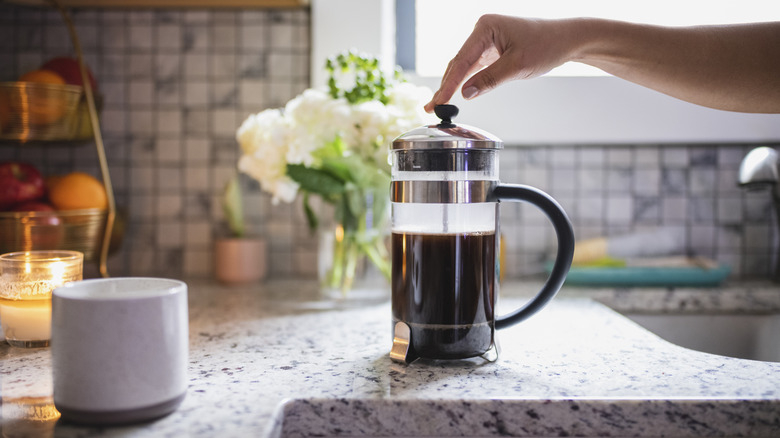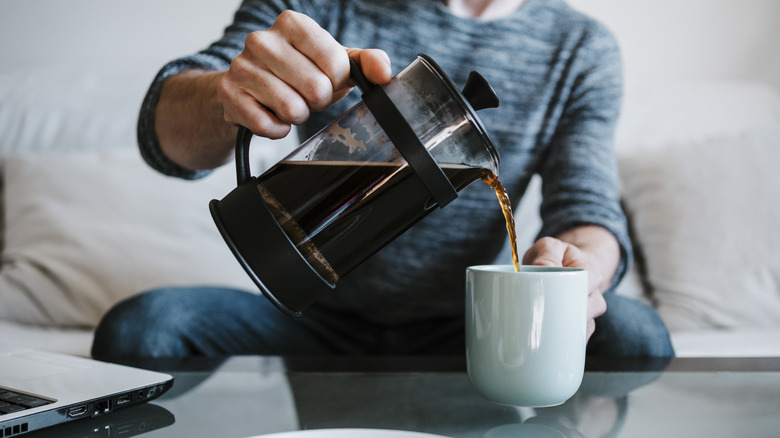The French Press Mistake That's Causing A Crummy Cup Of Coffee
A cup of home-brewed coffee can be as delicious as one from the coffee shop — if you know how to make it the right way. With coffee prices likely to increase, you certainly don't want to end up wasting money on a bad batch of brew. That's why The Takeout got some advice on how to correctly use a French press from former barista Matt Woodburn-Simmonds, who is also one half of the team behind Home Coffee Expert. To help out home brewers, he pointed out two common mistakes: using boiling water and not correctly timing the infusion.
Woodburn-Simmonds explains that although "generally people will use boiling water for French press, ideally you want water that is 204 degrees Fahrenheit so that the coffee grounds aren't burnt." When you burn coffee grounds, it "adds bitter and acrid flavors to your final cup," he elaborates. Instead of pouring the water as soon as it's boiled, Woodburn-Simmonds recommends waiting two minutes to let it cool if you don't have a kettle that you can set to a specific temperature.
Once you do pour the water, make sure that you actually time the infusion. Let's be honest, most of us don't do this. As Woodburn-Simmonds says, people "just leave it until they think it's ready or forget about it and make breakfast and come back later." Though it might not seem like a big deal, "this will result in under-extracted, sour, and thin-tasting coffee, or wildly over-extracted, super bitter coffee," he explained.
More things to avoid when making coffee with a French press
Although the French press is fairly simple to use, certain small mistakes can have a big impact. Another common misstep that Matt Woodburn-Simmonds cautions against is not pouring the coffee as soon as the infusion time is done — he recommends around four minutes of steeping. Leaving the brew in the press after that is a problem because even though the grounds are gathered at the bottom, they are still in contact with the brewed coffee. "This means you're just adding more and more bitterness to your coffee," Woodburn-Simmonds explains. Home brewers should simply "press the plunger and pour."
But, what do you do if you've brewed multiple cups to enjoy throughout the day? "Transfer it to a thermos or something unless you like your coffee to get progressively worse as you drink it," Woodburn-Simmonds says. Although these mistakes are common, they're also very easy to correct, so you can brew a great cup with little effort now that you know what to avoid. To make the experience even better, drink coffee from a tulip-shaped mug. And, after you've had your cup of joe, you can eat it too by using spent coffee grounds to make delicious granola.

